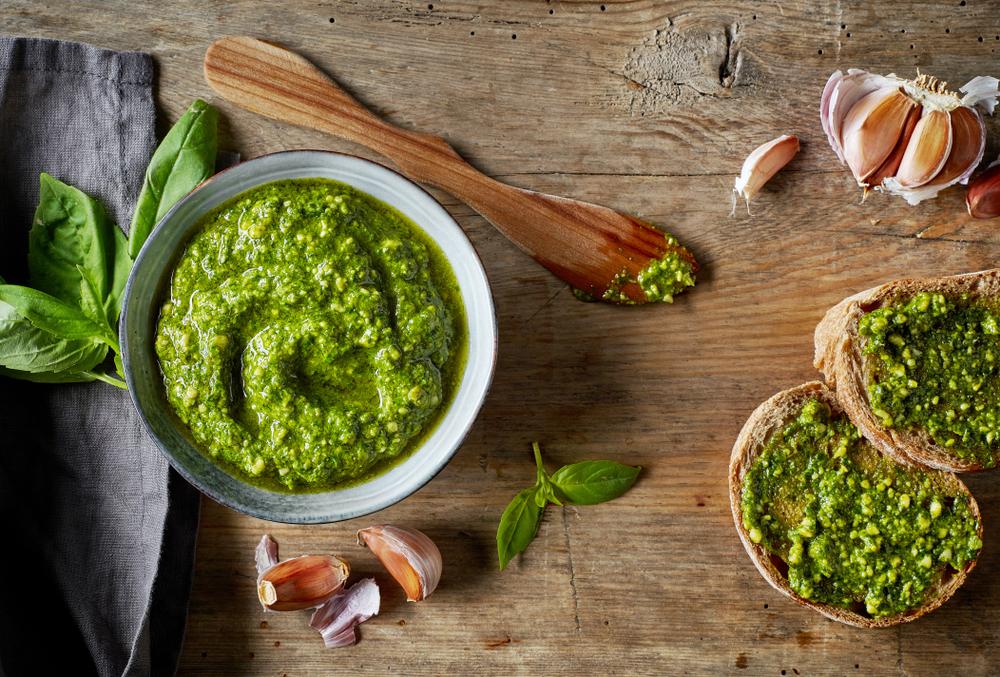In time for summer, when all the green, herby things are flourishing in the sun—and threatening to overtake gardens—comes a new cookbook dedicated to all things pesto.
“Pesto: The Modern Mother Sauce,” is by Leslie Lennox, co-creator with her husband of Atlanta-based pesto company “Hope Gardens.” They got their start at the farmers market, selling pesto made from basil grown in their backyard greenhouse, before making their way into Whole Foods Market and the kitchens and hearts of chefs such as acclaimed James Beard Award-winner Linton Hopkins.






